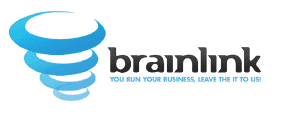A $150 million affordable housing project in Forest Hills, Queens, just broke ground—and it’s more than a local headline. The Perennial, led by Foxy Development and Selfhelp Realty, will convert the long-shuttered Parkway Hospital into 145 apartments prioritized for seniors and formerly homeless New Yorkers. For NYC builders, subcontractors, and IT leaders, this is a clear signal of where the work is going and what it will take to win and deliver it.
What’s changing in the NYC construction market
– Affordable/supportive housing is a core pipeline: Housing demand, an aging population, and policy pressure have moved this sector from niche to essential.
– Layered financing is the norm: Expect multi-source capital stacks (LIHTC, public subsidies, mission-driven lenders), each with its own rules, documentation, and reporting.
– Longer, more complex timelines: Approvals, stakeholder coordination, and compliance add months and new risk to schedules.
– Adaptive reuse is accelerating: Conversions of hospitals, schools, and civic buildings require specialized scopes and tight coordination across trades, especially MEP and demolition.
Who is winning these jobs
– Strategic partnerships: Teams that align GCs with MWBE subs, nonprofits, and social service agencies are more competitive and execution-ready.
– Compliance-first delivery: Prevailing wage, Davis-Bacon, certified payroll, Section 3, and green building mandates reward firms with mature processes.
– Tech-enabled controls: Project management and accounting platforms like Sage 300 CRE, when fully utilized, give teams the audit trails and financial clarity public clients expect.
Operational implications for owners and IT teams
– Make affordable housing a repeatable playbook: Build internal expertise or partner up to navigate funding rules, documentation, and inspections.
– Treat project controls as mission-critical: Standardize cost codes, automate certified payroll, and align billing with funding requirements to prevent payment gaps.
– Manage cash flow proactively: Public disbursements can be slow; track committed costs vs. actuals in real time, reconcile subcontractor billing monthly, and close change orders fast.
– Be audit-ready and secure: Lock down permissions, require attachments for cost events, enforce approvals, and maintain immutable audit trails across the job lifecycle.
Market context to watch
– Labor and regulatory pressure: Workforce shortages and expanding compliance expectations make efficient field-to-office workflows a competitive differentiator.
– Environmental and energy mandates: Electrification and sustainability requirements add new line items, rebates, and reporting checkpoints that must be tracked rigorously.
– Competitive advantage through execution: Firms that move beyond spreadsheets and email checklists consistently outpace peers on both win rates and closeout quality.
Action steps for mid-sized NYC contractors
– Get fluent in funding rules: Train teams on tax credits, prevailing wage, and city/state compliance. Fill gaps with specialized partners.
– Modernize your delivery stack: Use Sage 300 CRE to standardize cost structures, automate compliance reporting, and centralize documents and approvals.
– Institutionalize audit readiness: Configure permissions, workflows, and documentation standards so every transaction is traceable and defensible.
– Build the right partnerships: Team early with MWBE subs, nonprofit operators, and consultants who bring subsidy and reporting expertise to the table.
Looking ahead
The Perennial is a bellwether for how public/private partnerships will shape New York’s construction pipeline through the decade. The firms that master compliance-heavy, tech-driven affordable housing and adaptive reuse will own the next chapter of the city’s skyline.
Original news source: https://rebusinessonline.com/foxy-development-selfhelp-realty-break-ground-on-150m-affordable-housing-project-in-queens/











